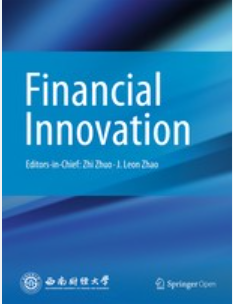全球不确定性和潜在避风港:黄金、比特币和货币作为世界主要股市的弱避风港和强避风港
IF 7.2
1区 经济学
Q1 BUSINESS, FINANCE
引用次数: 0
摘要
本文研究了 2014 年至 2022 年的五种避险资产反应,包括史无前例的 COVID-19 危机、俄罗斯入侵乌克兰以及 2015 年和 2022 年美国大幅加息。我们采用了多变量因子随机波动率(MSV)模型这一独特方法,该模型在金融市场分析中极为高效,使我们能够对无法直接观察到的避险资产关系进行动态因子分析。研究样本包括五种潜在的避险资产--黄金、比特币、欧元、日元和瑞士法郎,以及五种主要的世界股票市场指数--标准普尔 500 指数、金融时报股票交易所(FTSE)100 指数、DAX 指数、STOXX 欧洲 600 指数和日经 225 指数。我们的研究结果有助于投资者在黄金、比特币和货币中寻找最佳避险资产,以对冲全球股市的金融动荡。我们的独特发现表明,黄金和日元的避险效果不同;也就是说,在所有股票指数中,日元的避险效果最强。比特币不是一种强避险货币,因为它与所考虑的股票指数负相关的天数为零,但在金融困境时期,它是一种弱避险货币。因此,我们认为强避险货币和弱避险货币的属性因时间和地点而异。我们研究的新颖之处在于 MSV 模型(首次用于寻找最佳避险资产属性)、动态因素分析、涵盖 2022 年俄罗斯入侵乌克兰的长期研究样本以及关注世界主要股票市场的国际投资者视角等方法的复杂性。我们扩展了之前的研究,分析了 2014-2022 年这一长时期内世界主要股票市场指数与五种潜在避险资产的相互关系,并使用独特的动态因素分析法展示了日元和黄金的差异化行为。此外,主要的创新贡献是建立了一个新的弱避险资产和强避险资产分类框架,这在以前的文献中没有应用过。本文章由计算机程序翻译,如有差异,请以英文原文为准。
Global uncertainty and potential shelters: gold, bitcoin, and currencies as weak and strong safe havens for main world stock markets
This article investigates five safe-haven asset responses from 2014 to 2022, including the unprecedented COVID-19 crisis, Russian invasion of Ukraine, and sharp US interest rate increases of 2015 and 2022. We apply the unique approach of the multivariate factor stochastic volatility (MSV) model, which is extremely efficient for financial market analysis and allows us to conduct dynamic factor analysis of safe-haven relationships that cannot be observed directly. The research sample consists of five prospective safe-haven assets—gold, bitcoin, the euro, the Japanese yen, and the Swiss franc—and five primary world stock market indices—the S&P 500, Financial Times Stock Exchange (FTSE) 100, DAX, STOXX Europe 600, and Nikkei 225. Our findings are useful for investors searching for the best safe-haven assets among gold, bitcoin, and currencies to hedge against financial turmoil in global stock markets. Our unique findings suggest that safe-haven effects work differently for gold and the yen; that is, the Japanese yen acts as the strongest safe haven across all stock indices. Bitcoin is not a strong safe-haven currency since it has zero days of negative correlations with the considered stock indices, but it is a weak safe-haven during times of financial distress. Consequently, we state that strong and weak safe-haven properties vary across time and place. The novelty of our study lies in the methodological complexity of the MSV model (used for the first time to find the best safe-haven asset properties), dynamic factor analysis, a long-term research sample covering the Russian invasion of Ukraine in 2022, and an international investor perspective focusing on the world’s leading stock markets. We extend earlier studies by analyzing the interrelations of the world’s leading stock market indices with five potential safe-haven assets during the long period of 2014–2022 and using a unique dynamic factor analysis to show the differentiated behaviors of the Japanese yen and gold. Additionally, the main innovative contribution is a new framework of weak and strong safe-haven asset classifications not previously applied in the literature.
求助全文
通过发布文献求助,成功后即可免费获取论文全文。
去求助
来源期刊

Financial Innovation
Economics, Econometrics and Finance-Finance
CiteScore
11.40
自引率
11.90%
发文量
95
审稿时长
5 weeks
期刊介绍:
Financial Innovation (FIN), a Springer OA journal sponsored by Southwestern University of Finance and Economics, serves as a global academic platform for sharing research findings in all aspects of financial innovation during the electronic business era. It facilitates interactions among researchers, policymakers, and practitioners, focusing on new financial instruments, technologies, markets, and institutions. Emphasizing emerging financial products enabled by disruptive technologies, FIN publishes high-quality academic and practical papers. The journal is peer-reviewed, indexed in SSCI, Scopus, Google Scholar, CNKI, CQVIP, and more.
 求助内容:
求助内容: 应助结果提醒方式:
应助结果提醒方式:


